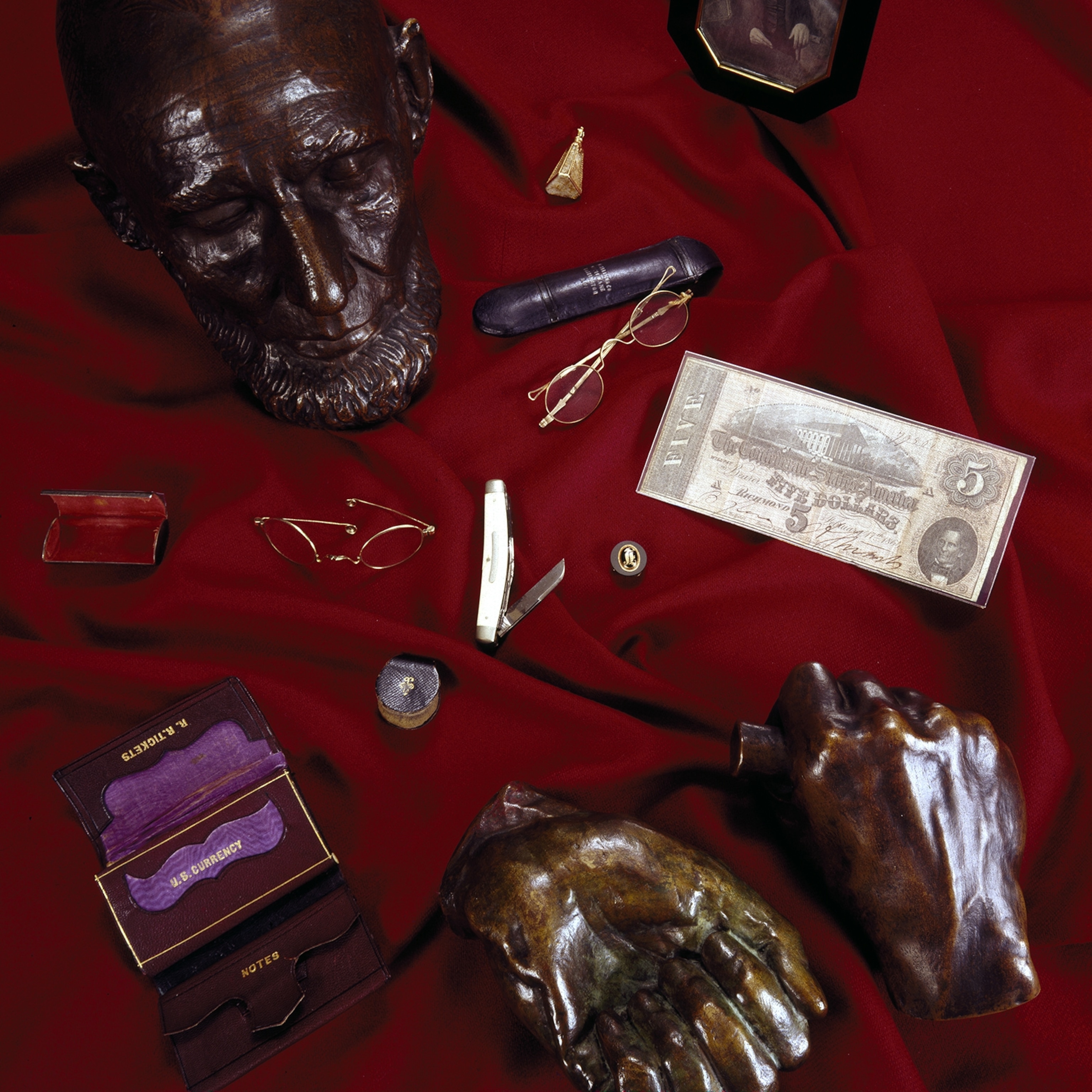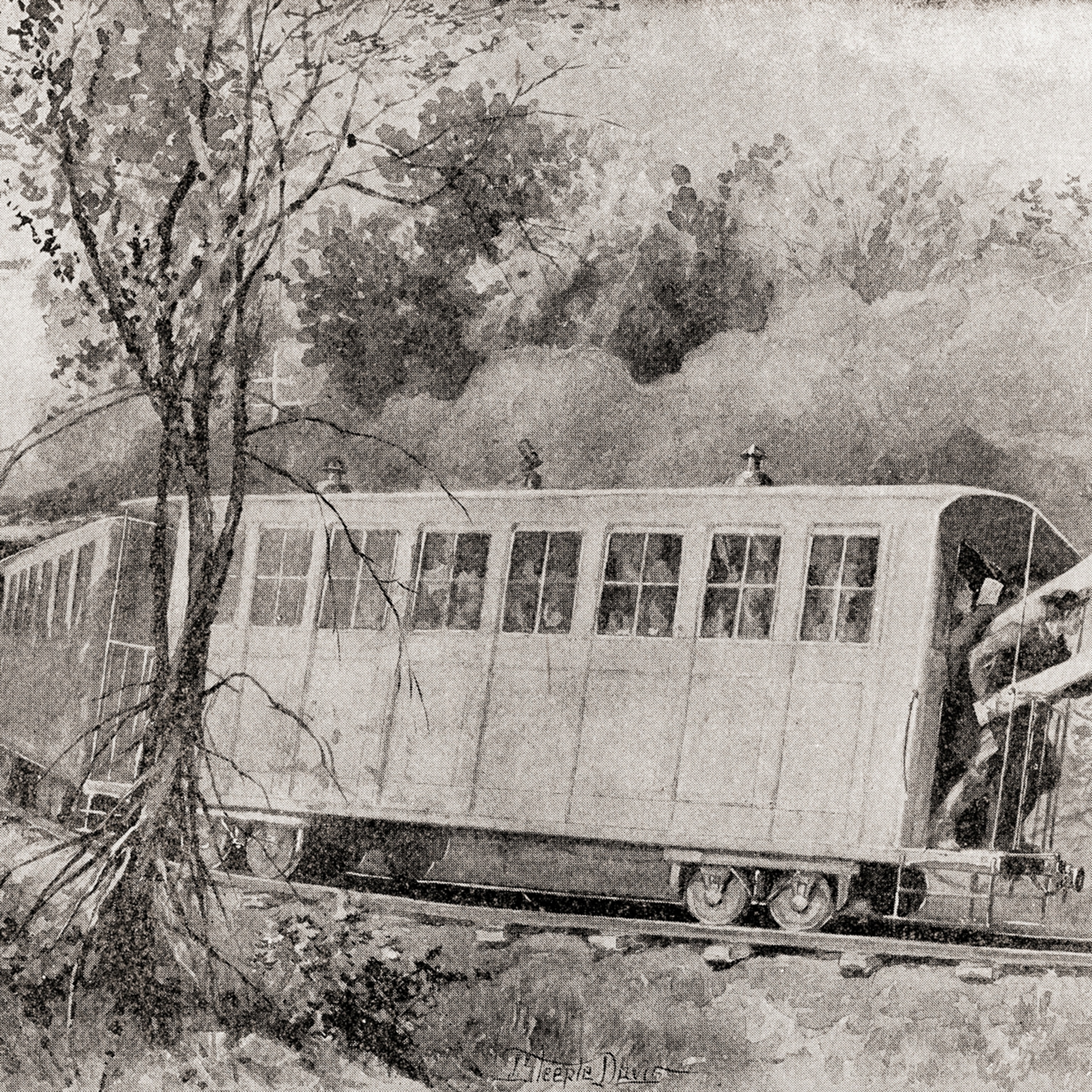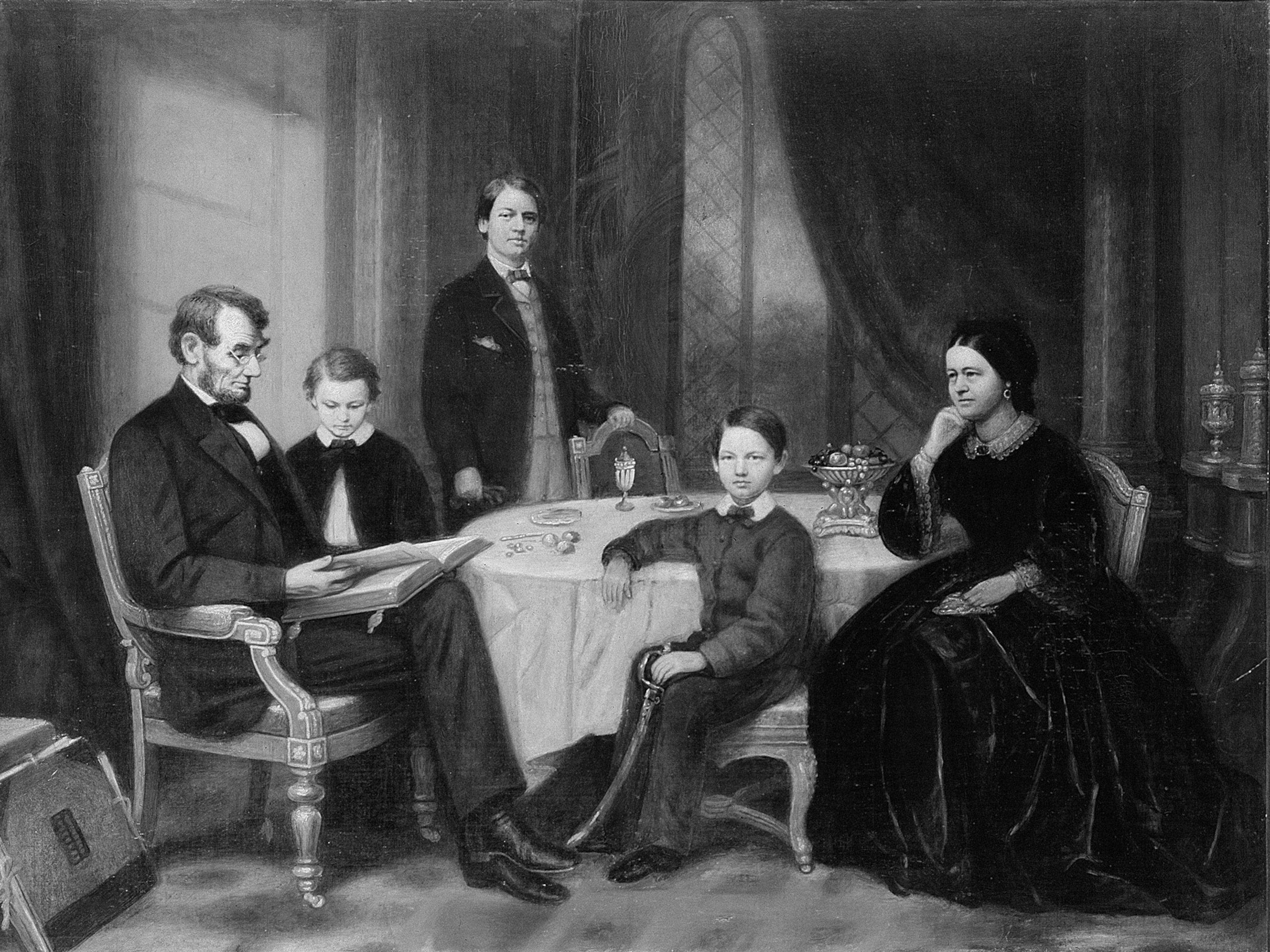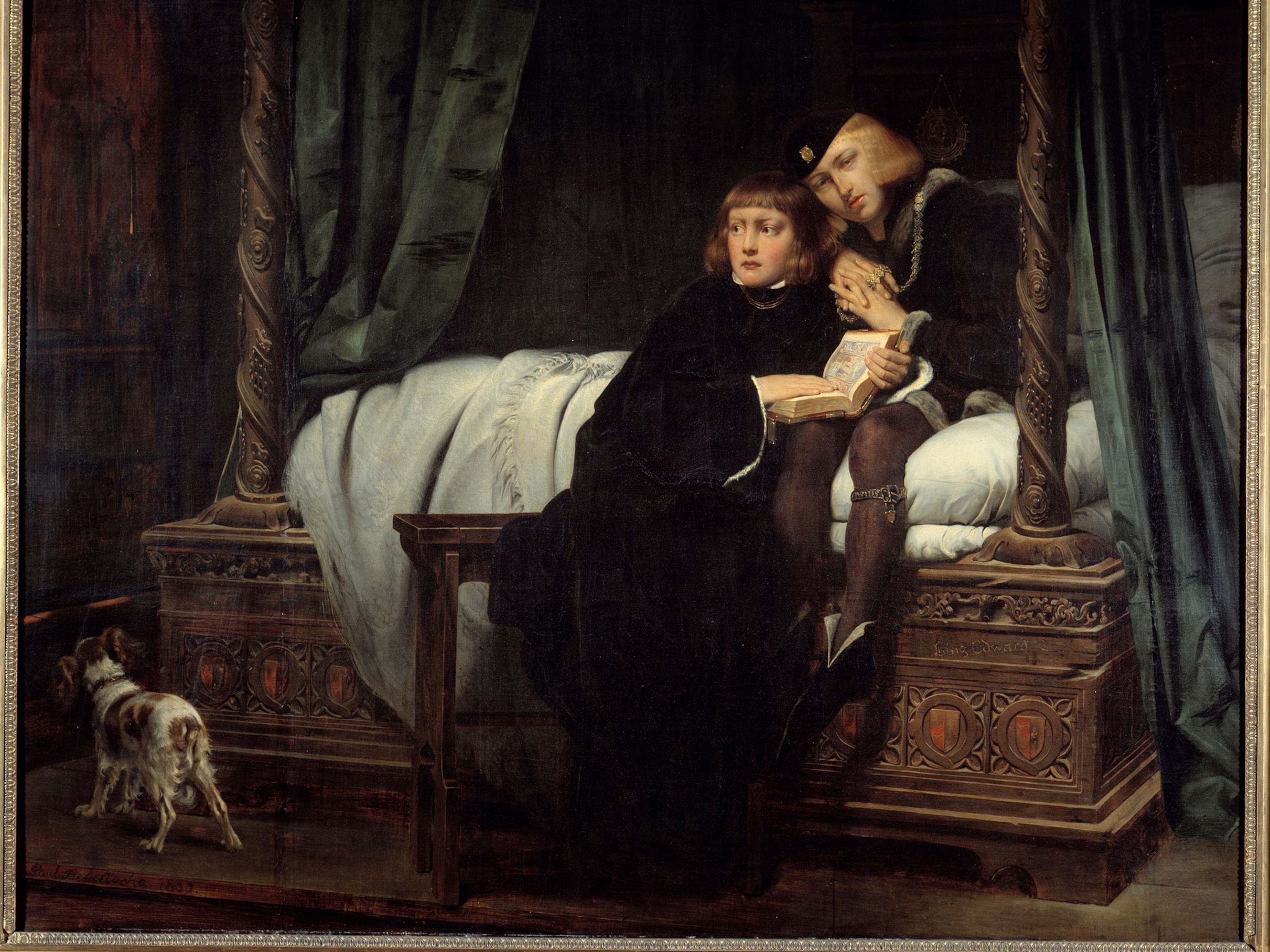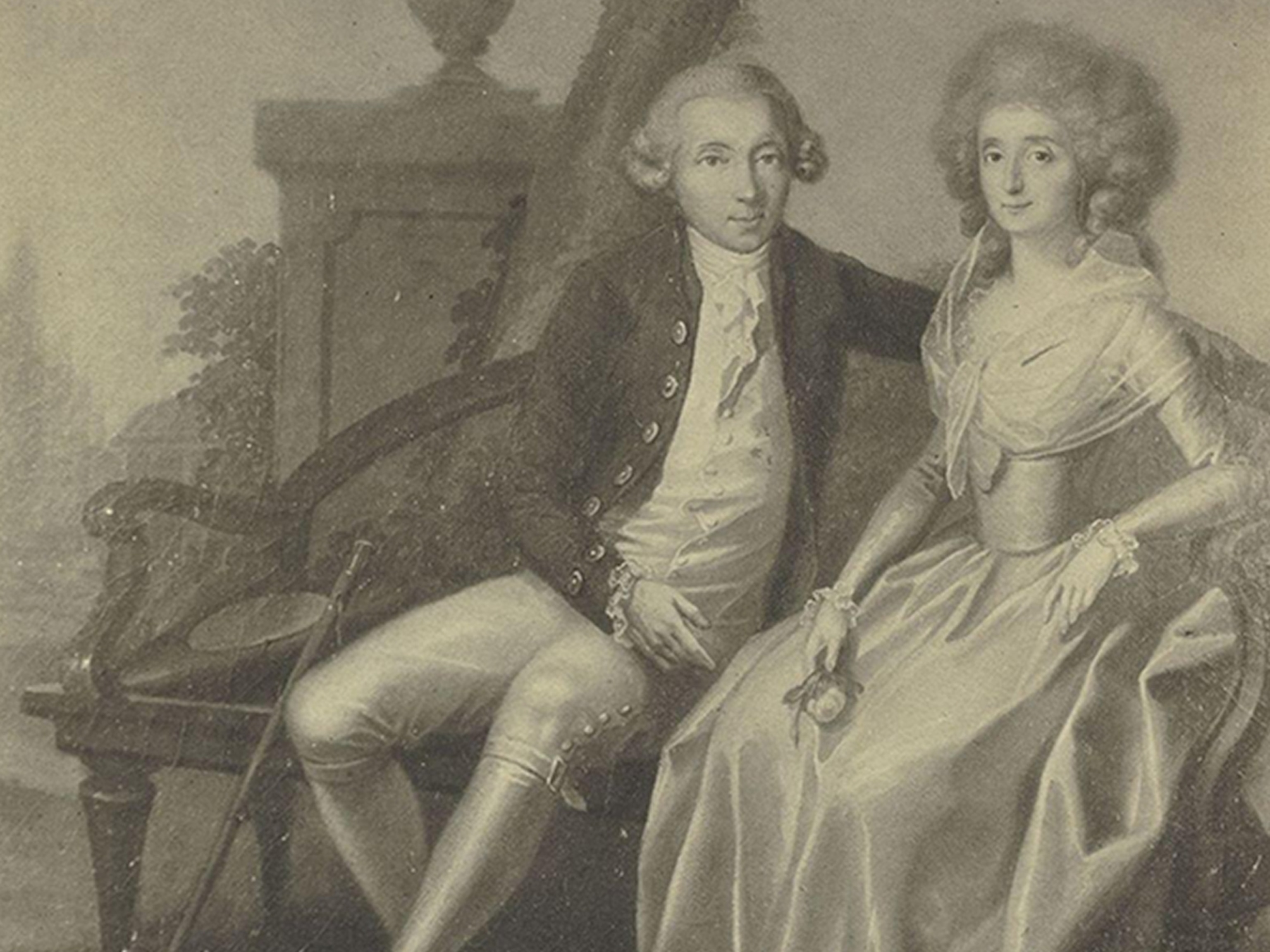What is Cold Harbor on Severance? It could be tied to this major Civil War battle
The Battle of Cold Harbor was the Confederacy’s last major Civil War victory. Does it offer any insight into the mysterious world of the hit TV show Severance?
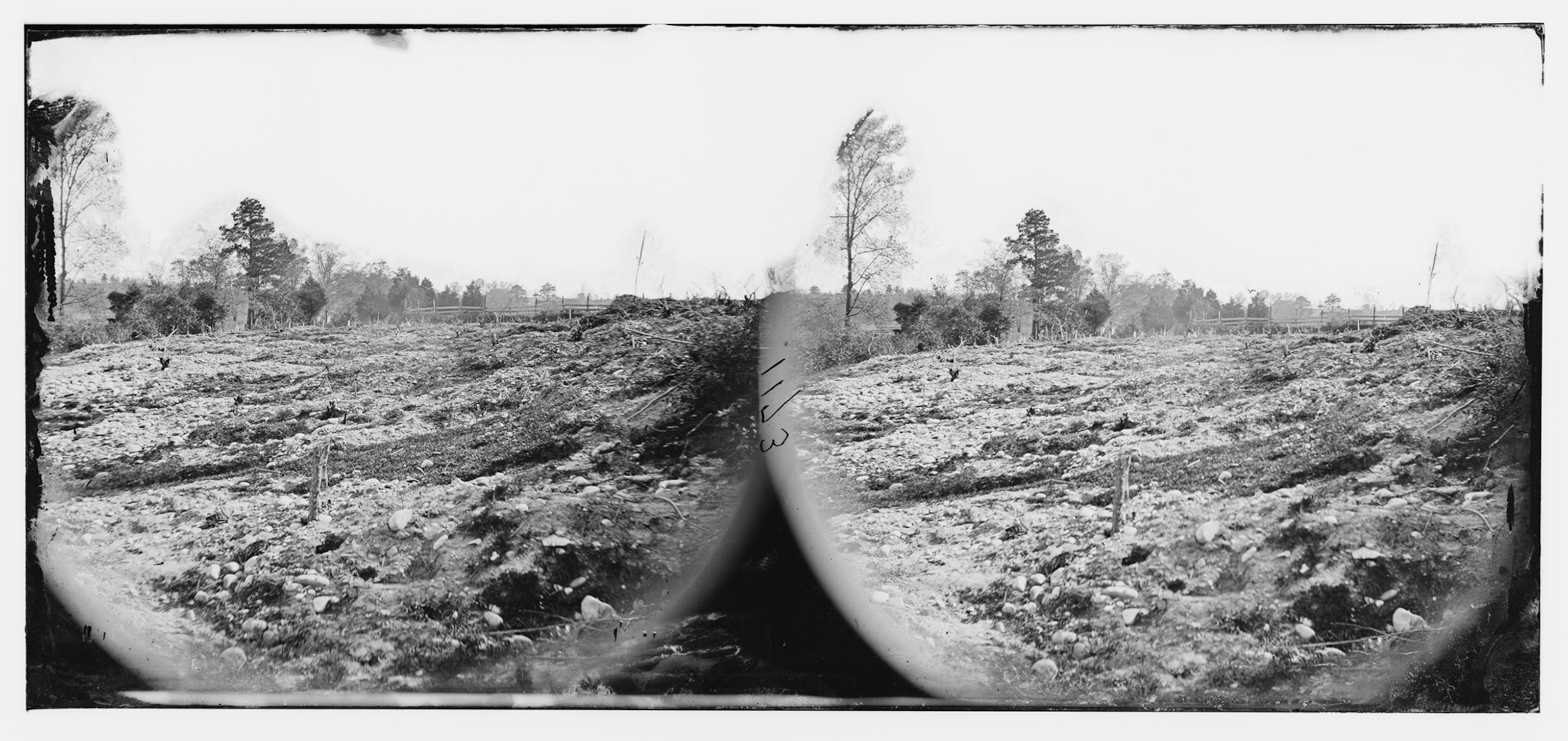
Easter egg or grim foreshadowing? For viewers of the second season of the hit TV show Severance, nearly everything about the show is up for frenzied fan analysis and debate.
Take Cold Harbor, the name of a pivotal file being worked on by the show’s lead character, Mark S. Does the mission relate to the real work being performed by sinister Lumon Industries, or is it somehow related to the real-life battle of Cold Harbor, an 1864 Civil War battle?
The real meaning of Cold Harbor in the TV show is anyone’s guess. But it is a very real place and the site of a major historical event—a disastrous Civil War battle still remembered as one of the most significant routs in American history. Is there any insight it can give us about where Severance is headed? Here’s what really happened at Cold Harbor.
How the Battle of Cold Harbor began
By then, the Civil War was more than three years old, and hundreds of thousands of soldiers and civilians had died on its battlefronts. After years of thwarted attempts, the Union Army was ready for a final attempt to take the capital of the Confederacy, Richmond, Virginia.
(Gettysburg was no ordinary battle. These maps reveal how Lee lost the fight.)
The city was home to a key railroad junction, important prisons, and a massive ironworks that was vital to the Confederate war effort. But it had even more significance because of its role as the political capital of the Confederacy—the seat of the rebellion that had cost the nation so much since the war began in 1861.
The Battle of Cold Harbor took place between May 31 and June 12, 1864. (As eagle-eyed Severance viewers have pointed out, this was one year before Lumon was supposedly founded.)

It was also heavily defended: Confederate forces not only concentrated in the area, but had dug into fortified positions around the city, which was surrounded by forests and swamps.
In late May, Ulysses S. Grant, commander of all Union forces, pushed his troops south through Virginia, arriving near a crossroads about 12 miles northeast of Richmond known as Cold Harbor. It was named after the Old Cold Harbor Tavern, an inn that had seen the crossroads change hands multiple times during the preceding years.
The Cold Harbor junction served as a vital route for both Confederate war materiel and reinforcement troops, making it a prime target for Union soldiers. Beginning May 31, Grant’s men began battling Confederates near the crossroads and soon wrested it from their control.
Grant’s next goal was to cut Confederate General Robert E. Lee’s army off from Richmond, in effect putting Union troops between the Confederates and their capital. But the delays during the first few days of fighting allowed Lee’s men to dig well-defended trenches along a seven-mile front, also adding much-needed reinforcements for the coming assault.
(Civil War envelopes were works of art—and propaganda.)
Although Grant projected confidence, his men had not forgotten difficult previous battles against fortified Confederates. “During the night, Grant’s staffer Lieutenant Colonel Horace Porter noticed men pinning names and addresses to their coats to aid in identifying their bodies,” writes National Parks historian William C. Davis. “This was not the behavior of men expecting to confront a broken and defeated foe.”
Massacre at Cold Harbor
On the morning of June 3, 1864, Grant’s soldiers finally began a major assault. It was an immediate catastrophe for the Union.
Overwhelmed by well-positioned Confederate soldiers and mired in swampy, forested terrain, the Union soldiers failed to move forward. Instead, they were mowed down in great numbers by entrenched Confederates.
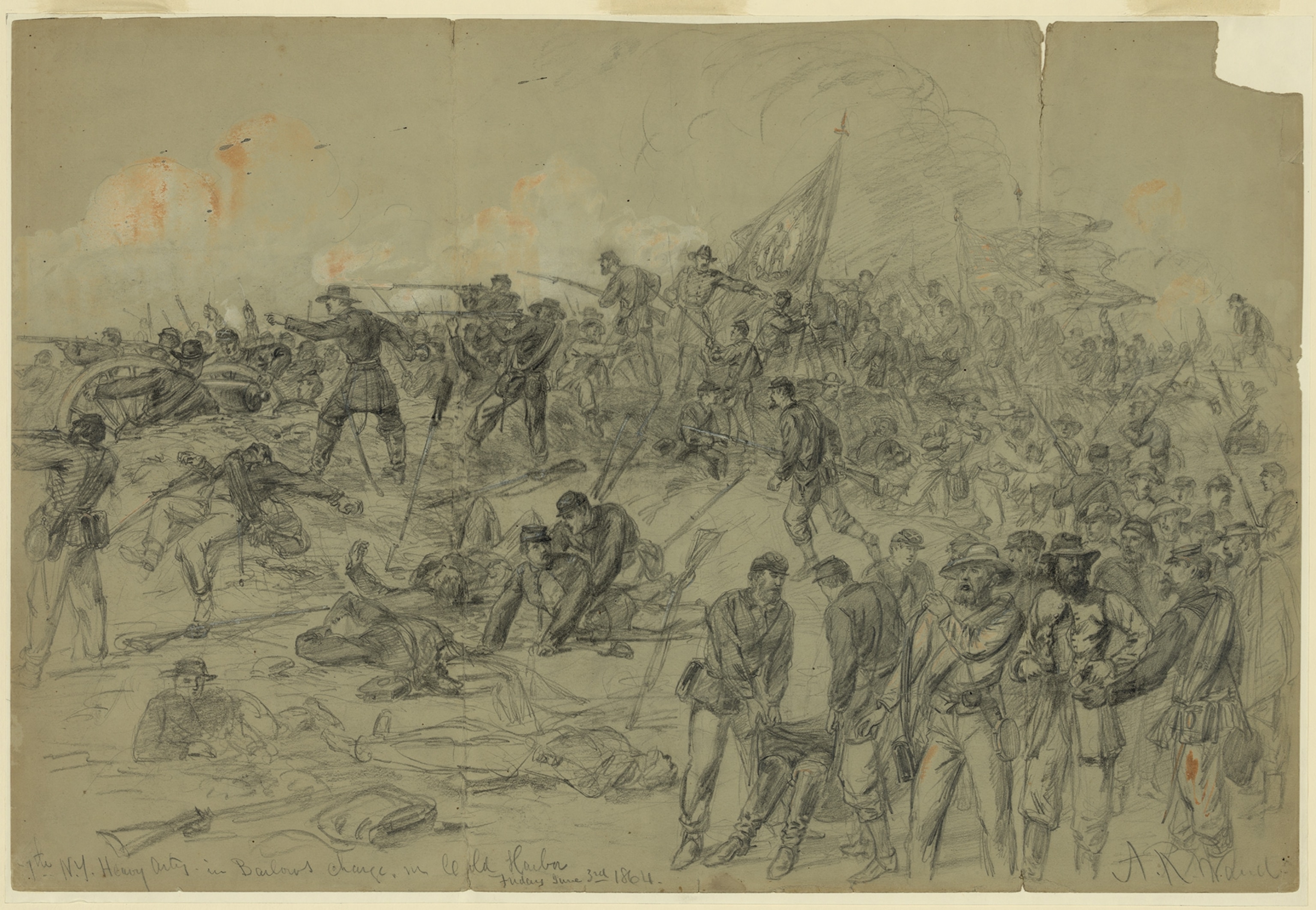
Wave after wave of Union soldiers were slaughtered, while desperate survivors dug their own makeshift trenches in the bloody dirt, even using the corpses of their fallen comrades as walls against the unrelenting gunfire.
Within 30 minutes, Grant lost about 7,000 soldiers. Ultimately, just 1,500 Confederates were killed, making the battle a colossal Confederate victory.
Cold Harbor’s aftermath
Dead and wounded Union men lay on nearly every surface of the battlefield, sometimes two or three deep, their bodies rotting in the hot sun. Their comrades, entrenched just feet away from Confederate fortifications, could not pick up the casualties for four long days, after which Grant and Lee worked out a two-hour ceasefire to allow Union soldiers to retrieve the bodies.
(This dish towel ended the Civil War.)
On June 12, Grant pulled his army out of the region altogether, ordering them instead to capture Petersburg, Virginia’s second-largest city, in a 292-day-long campaign.

Today, the Battle of Cold Harbor is remembered as a miserable defeat in a grinding series of battles by attrition. Though Grant initially defended his decision to order the June 3 assault, he later recanted. The last major victory for the Confederates, the battle pushed Northern morale to an all-time low, providing a brutal reminder of the cost of the war.
“I have always regretted that the last assault at Cold Harbor was ever made,” he wrote in his 1885 memoirs. “At Cold Harbor no advantage whatever was gained to compensate for the heavy loss we sustained.”
So, does the disaster at Cold Harbor offer any guidance as to where the plot of Severance is headed? Perhaps not—but it’s surely an ominous name for the show about a dystopian mega-corporation to invoke.
